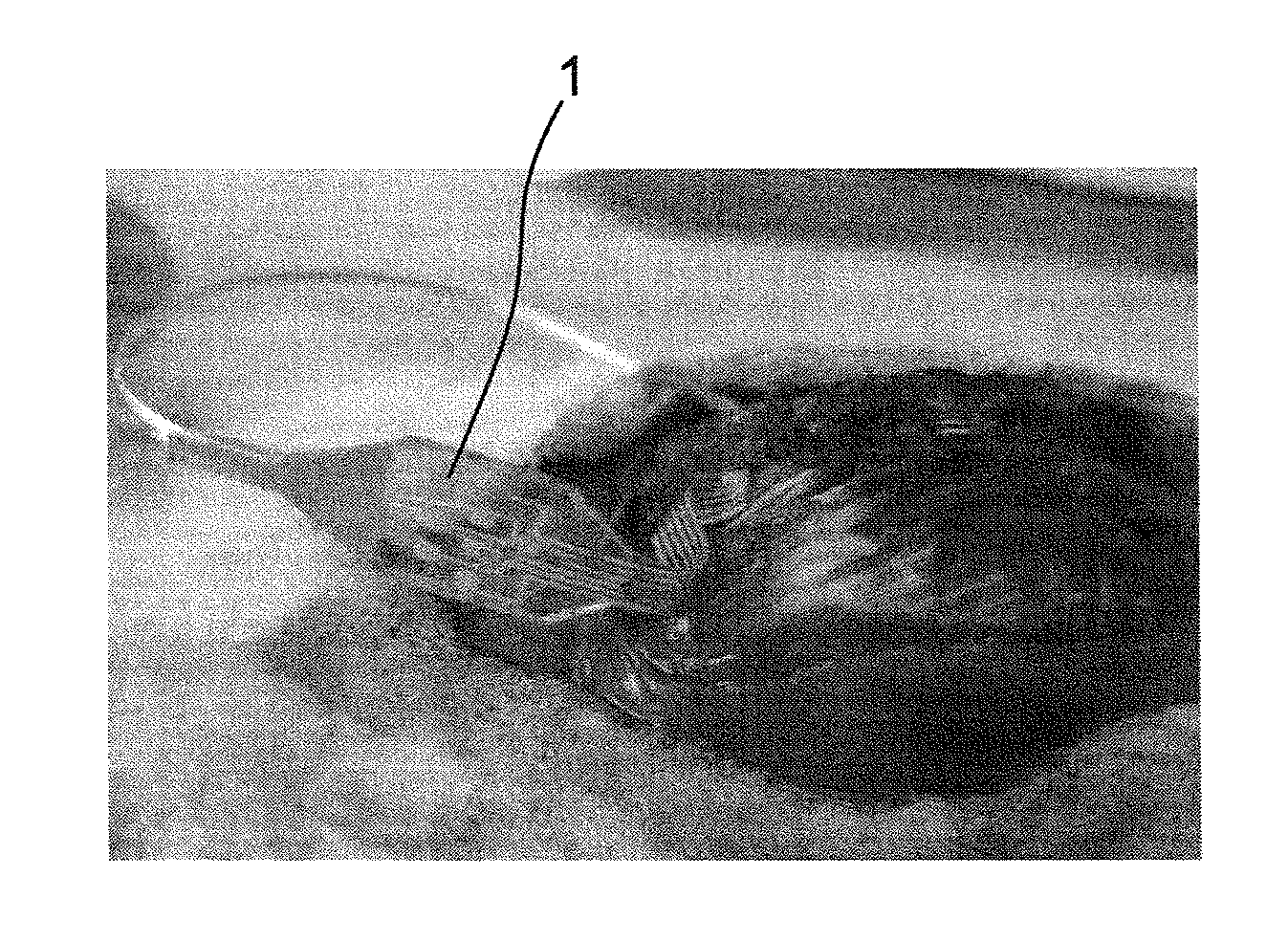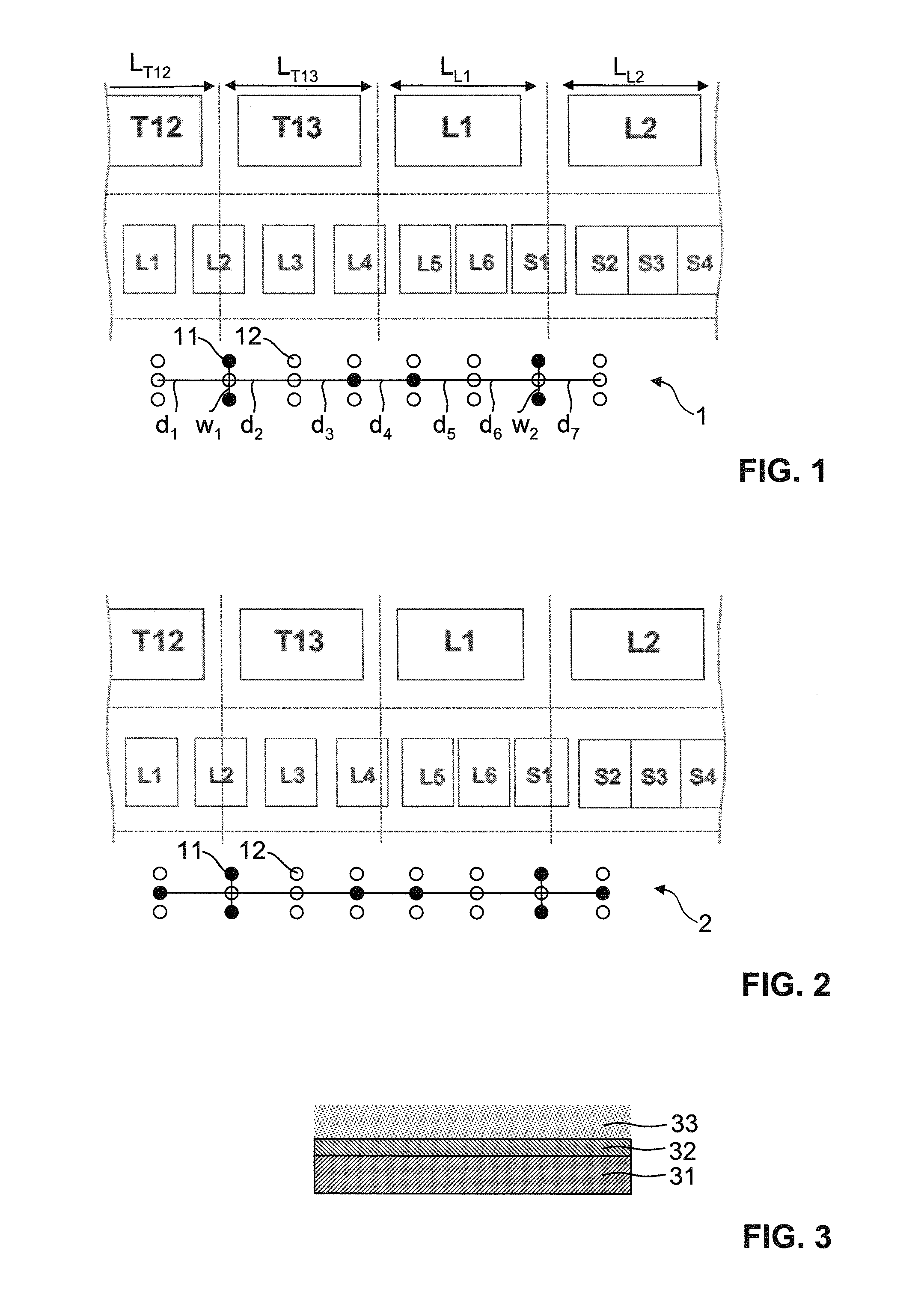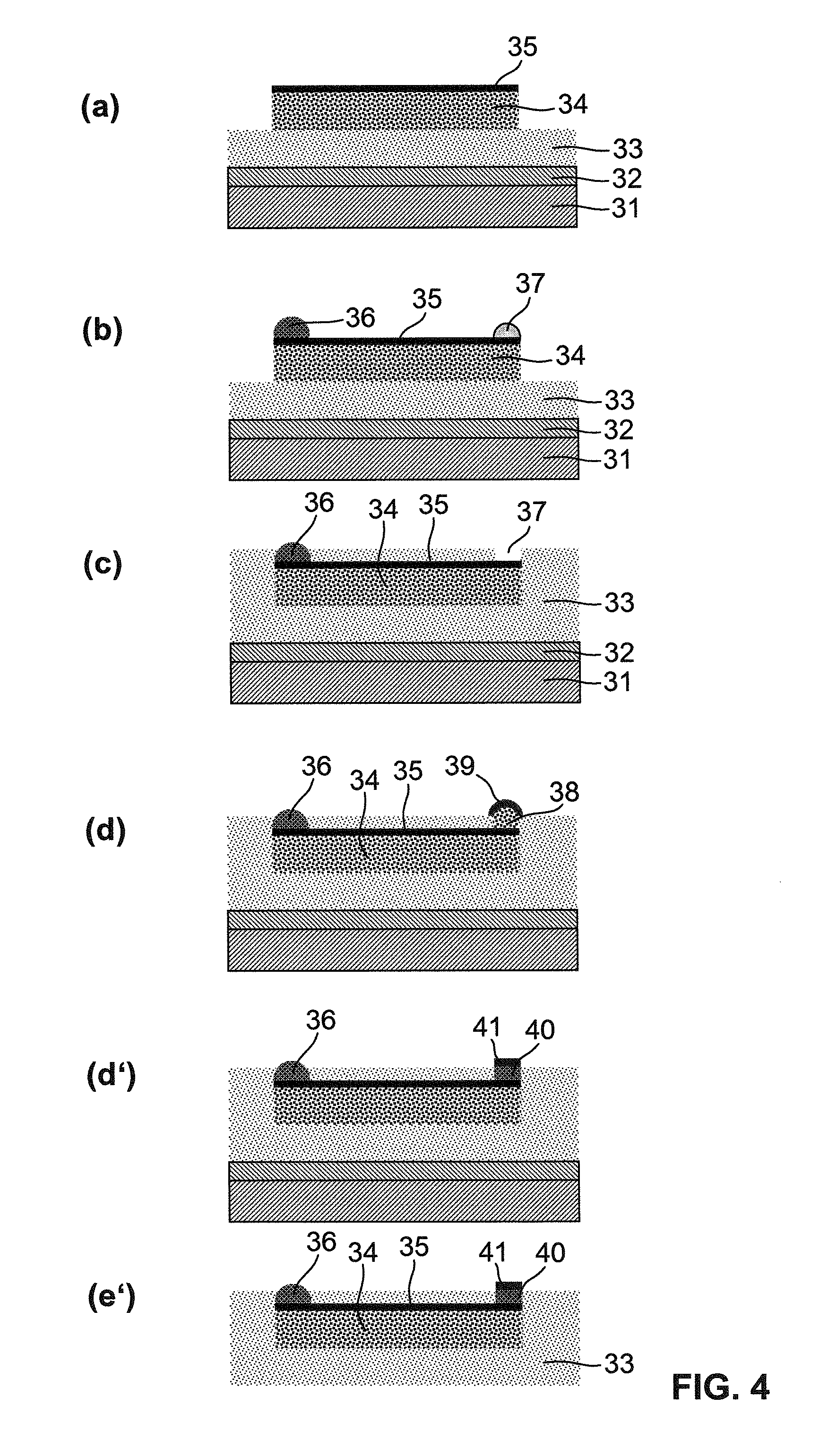PDMS-Based Stretchable Multi-Electrode and Chemotrode Array for Epidural and Subdural Neuronal Recording, Electrical Stimulation and Drug Delivery
a multi-electrode and chemotrode technology, applied in the field of pdms-based stretchable multi-electrode and chemotrode array for epidural and subdural neuronal recording, electrical stimulation and drug delivery, can solve the problems of limited stretchability, tissue damage, implant damage or loose contact between electrodes and targeted tissues, etc., to facilitate locomotion, improve specificity, and reduce pain
- Summary
- Abstract
- Description
- Claims
- Application Information
AI Technical Summary
Benefits of technology
Problems solved by technology
Method used
Image
Examples
Embodiment Construction
General Remarks
[0075]In the following, preferred embodiments of PDMS-based stretchable microelectrode arrays (SMEA) for spinal cord stimulation are described. Such SMEAs were fabricated and tested in vivo on the spinal cord of rats. However, the invention is by no means limited to SMEAs suitable for implantation in rats or other rodents, and SMEAs of the type described in the following may also be employed with other vertebrates, including humans. Use of such SMEAs is not limited to implantation at the spinal cord. SMEAs of the type described here may also be employed in other body regions where they are subjected to strains.
[0076]The monolithic PDMS structure of the SMEA contained conductive PDMS (cPDMS) tracks, gold or platinum or platinum-iridium electrodes and contact pads connected to a head connector via medical fine wires. A PDMS substrate was used to reduce the mismatch between the mechanical properties of the implant and the spinal cord. The elastic and electrical propertie...
PUM
| Property | Measurement | Unit |
|---|---|---|
| total thickness | aaaaa | aaaaa |
| thickness | aaaaa | aaaaa |
| thickness | aaaaa | aaaaa |
Abstract
Description
Claims
Application Information
 Login to View More
Login to View More - R&D
- Intellectual Property
- Life Sciences
- Materials
- Tech Scout
- Unparalleled Data Quality
- Higher Quality Content
- 60% Fewer Hallucinations
Browse by: Latest US Patents, China's latest patents, Technical Efficacy Thesaurus, Application Domain, Technology Topic, Popular Technical Reports.
© 2025 PatSnap. All rights reserved.Legal|Privacy policy|Modern Slavery Act Transparency Statement|Sitemap|About US| Contact US: help@patsnap.com



